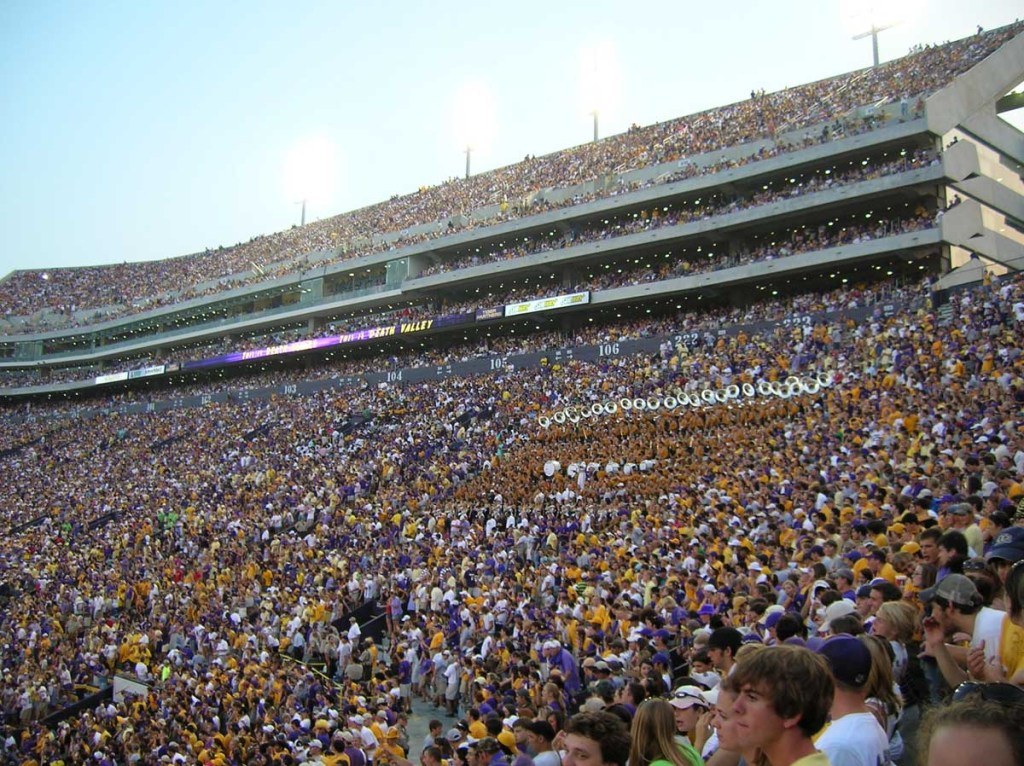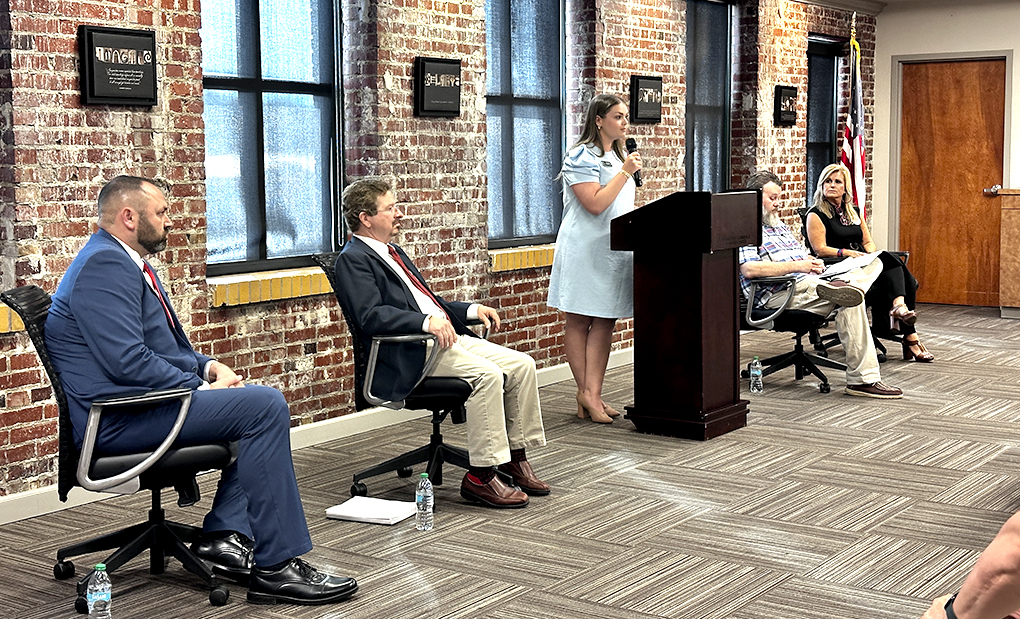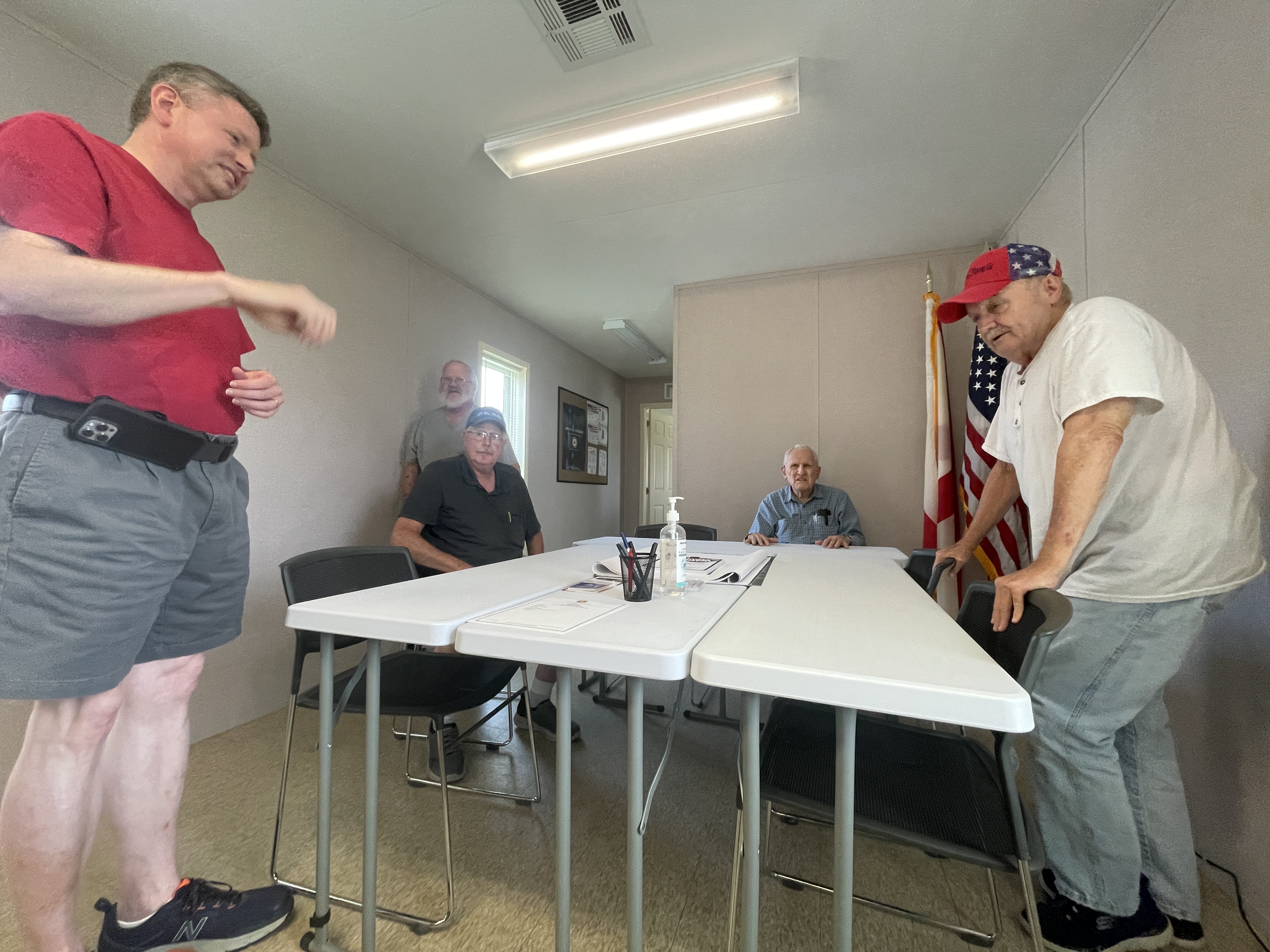Football-ticket tax break helps colleges get millions from fans
Published 5:04 pm Friday, October 26, 2012

- LSU's Tiger Stadium
Theodore L. Jones has held season tickets on the 43-yard line at Tiger Stadium, home of the perennial football powerhouse Louisiana State University, for almost 20 years. Because of the Baton Rouge lawyer’s lobbying in Congress in 1986, he and thousands of other fans get a tax break on donations they make as a condition for buying seats.
The deduction Jones helped craft is now costing U.S. taxpayers more than $100 million a year in revenue that the Treasury can’t collect, based on data compiled by Bloomberg.
It is the sort of provision that Mitt Romney and congressional Republicans say they will target if they win this November’s elections. There are hundreds of write-offs in the tax code that lawmakers of both parties say could be restricted to help lower the deficit. Rep. Kevin Brady, a Texas Republican and a senior member of the House Ways and Means Committee, urges a tax overhaul to bolster the economy.
“We need to look at everything,” Brady said when asked about the deduction on donations linked to college sports tickets. No one has specifically targeted the provision. “It’s important, vitally important to somebody, but the overall goal is still: How do we create that pro-growth tax code?”
Romney, the Republican presidential candidate, advocates curtailing breaks so he can lower personal and corporate rates, though he hasn’t provided specifics. Various deductions for charitable contributions to education cost the Treasury $5.7 billion this year, according to Congress’s Joint Committee on Taxation. The estimate doesn’t break out the loss of revenue from donations linked to sports tickets.
At the same time, the college seat-donation tax break may show how hard it would be to simplify the tax system. In this case, hundreds of universities – many of them large, state- supported institutions – and thousands of voters benefit from the provision. It is one of hundreds of exemptions around which entrenched interests have organized their own economies and which they would probably fight to retain.
“College athletics are extremely popular,” says Marcus Owens, a lawyer in the Washington law firm Caplin & Drysdale. He is a former head of the Internal Revenue Service’s Exempt Organizations Division. “They are often associated with state institutions. In a lot of states, a significant percentage of the adult population went to some state institution, has an allegiance to the athletic teams and represents a considerable voting bloc.”
No government agency has totaled the cost to taxpayers of the deduction for donations linked to college sports tickets. Neither has the 75-year-old Tax Foundation, a nonpartisan Washington research group.
Some colleges with the most popular teams in football, basketball and hockey take advantage of the provision to market higher prices to season-ticket buyers. They set the face value, then demand additional hundreds or thousands of dollars in what are designated contributions as a condition of sale. The pitch is that under U.S. law, the fans can write off 80 percent of the mandatory donations when they itemize deductions. Other schools don’t set specific donation levels. Instead, they award seat locations using point systems in which giving may be one element.
To obtain a sampling of the data, Bloomberg made public- records requests to the 54 state-sponsored universities in the six largest football conferences. Some schools said they don’t require donations to buy season tickets, and several said they couldn’t provide the data. At some institutions, the gifts are collected by nonprofit booster clubs that don’t report donations by type.
The 34 that reported seat donations said they received $467.2 million in such contributions for the fiscal year ended June 30, 2011. Ohio State University collected the most, with $38.7 million. The only two schools that initially qualified under the provision ranked second and third: LSU, with $38 million, and the University of Texas at Austin, $33.9 million.
For those 34 schools, that means taxpayers could deduct as much as $373.7 million, or 80 percent of the total of donations. Based on a 28 percent tax rate – the third-highest, for married couples reporting incomes between $142,700 and $217,449 – that would reduce revenue to the Treasury by $104.6 million. That cost estimate assumes the seat donations would all be deducted from individuals’ tax returns; the universities in the survey don’t break out gifts tied to ticket purchases by corporate buyers.
The total of lost federal tax receipts may be some multiple of that amount, because more than 1,000 university sports departments are eligible to demand such deductible gifts with ticket sales. Based on the Bloomberg sampling, it wouldn’t be unreasonable to estimate that giving related to season tickets may total $1 billion a year, according to Andrew Zimbalist, an economist at Smith College in Northampton, Mass., who has written 12 books on the business of sports.
In 1988 after the seat-donation provision was expanded, Congress’s Joint Committee on Taxation calculated that it would cost less than $500,000 a year in forgone tax collections.
For Ted Jones, the 78-year-old LSU fan, here’s how it works for his seats in “Death Valley,” the stadium where LSU has won almost three-quarters of its games since 1924. His two seats on the 43-yard line, which were passed on to him by the family of a friend who died, are 34 rows from the field. He pays $410 for each ticket, plus a required $950 donation per seat. For two other seats around the 10-yard line, the tickets also cost $410, after he makes a $900 donation for each.
So to qualify for buying $1,640 of tickets to eight games this season, he had to donate an additional $3,700. He gets to write off 80 percent of that, or $2,960, when he itemizes deductions on his tax return. Because Jones says his income has put him in the top 35 percent bracket, the provision saves him $1,036.
Jones has been going to LSU football games since the 1960s. The home team has put a tiger named Mike on the sidelines for decades. Jones recalls a game in a downpour in the late 1970s against the appropriately named Oregon Ducks. Another memory is of the “earthquake game” in 1988, when LSU beat Auburn University, 7-6, on a last-chance pass. As local lore has it, the roar of the crowd registered on the school’s seismograph.
Donations required to buy season tickets in the LSU stadium range from $210 for end-zone seats to $3,000 for club seats, according to Herb Vincent, a spokesman for the athletic department. The money goes to scholarships, facilities and other costs, he says.
The school has an athletic budget of $107.3 million, according to its fiscal 2011 filing with the National Collegiate Athletic Association. LSU’s football team, usually a contender for the national championship, is currently ranked No. 6 in the Associated Press and USA Today polls.
The roots of the seat-donation deduction go all the way back to the Revenue Act of 1950 during the Truman administration, according to Owens, the former IRS official. In an effort to rein in profits for untaxed groups such as charities, Congress in the 1950 law imposed taxes on their “unrelated business income.” But the act’s legislative history specified that the U.S. couldn’t tax revenue from college athletics tickets, the primary source of sports revenue then, Owens said.
As Congress was writing the Tax Reform Act of 1986, the IRS had ruled that donations required for ticket purchases shouldn’t be tax-exempt. At the time, Jones was a lobbyist for the state in Washington, and LSU’s athletic director, the late Bob Brodhead, asked him to push to protect the deduction.
Brodhead wanted to expand Tiger Stadium to add premium seats that he could leverage into increased donations. He asked Jones “to make sure that if LSU built suites, it would be deductible,” Jones says. He approached Senator Russell Long, the senior Democrat on the Finance Committee, about amending the 879-page bill. Long was an LSU graduate who represented Louisiana for 39 years.
“I said, ‘We need to exempt LSU on the donation deduction on the seats,”‘ Jones says. Long agreed and asked “Who else?” because he didn’t want the amendment to be a “rifle shot” with just one beneficiary, Jones says.
Jones recalls suggesting the University of Texas at Austin, another football power. He thought Democratic Rep. Jake Pickle, a UT graduate on the Ways and Means Committee whose district included Austin, would be supportive, he says.
According to another version, UT contacted Pickle on the matter, and he discussed it with the tax-writing committee, whose bill already had passed the House. When Long’s provision was raised later during negotiations, Ways and Means Chairman Dan Rostenkowski, the late Illinois Democrat, asked whether any of his members cared. Pickle’s interest was recalled, and the two-school measure stuck, according to a former House aide familiar with the matter who declined to be identified. Pickle and Long have since died.
The provision they crafted became section 1608 of the historic measure, which eliminated many business tax breaks and overhauled levies on individuals. The amendment allowed LSU and UT season ticket buyers to deduct 100 percent of donations linked to their seats. It described the schools eligible for the tax break in such a way that no others could qualify. Here is the language covering UT:
“Such institution was mandated by a State constitution in 1876; such institution was established by a State legislature in March 1881; is located in a State capital pursuant to a statewide election in Sept. 1881; the campus of such institution formally opened on Sept. 15, 1883; such institution is operated under the authority of a 9-member board of regents appointed by the governor.”
The law declared that donations to the schools “shall not be disqualified because such taxpayer receives the right to seating or the right to purchase seating in an athletic stadium of such institution.”
When the identities of the two schools later became known, other colleges complained. Rather than repeal the provision, Congress voted in 1988 to extend the benefit to all of them, while reducing the deduction to 80 percent of contributions.
Jones defends the long-term effect of the write-off, saying it has allowed LSU to fund women’s sports and channel millions of dollars a year into academics. In fiscal 2011, the athletic department paid $10 million for student-athlete scholarships and gave $3.6 million to the university for academics, according to the school. Jones likened the tax break to Senator Long’s description of the benefits from the old business deduction for the three-martini lunch.
“Those kinds of deductions are like fertilizer to a farmer,” Jones said, quoting Long. “They increase the yield.”
The $33.9 million in gifts that UT collected in connection with sales of season tickets in fiscal 2011 helped the athletic department generate $150.3 million in revenue. That made it the richest sports program among American colleges, based on data compiled by Bloomberg. The university reported spending $9 million on athletic scholarships.
DeLoss Dodds, the UT athletic director, didn’t respond to multiple interview requests.
At Texas A&M University in College Station, the $20 million in gifts tied to season tickets will only go up over time as fans compete for the best seats, says Miles Marks, who was president of the 12th Man Foundation booster club until Oct. 1, when he stepped down. The seat-donation total was ninth-highest in the Bloomberg sampling.
A&M has a fundraising advantage because of its strong football tradition and dedicated fan base, Marks says. At schools that can’t demand seat donations in the thousands of dollars, the only way to increase revenue if lawmakers eliminate the tax deduction would be to raise ticket prices, he says.
“Demand would go down,” Marks says. “There is a trickle- down effect.”
LSU’s Tiger Stadium has 92,542 seats, more than any venue in the National Football League. Of those, 67,000 command a donation, according to the spokesman Vincent. Now the school is spending about $80 million to double the number of luxury boxes to 140 and the number of premium club seats to 7,000.
This will enable LSU to increase revenue from seat donations by as much as $15 million, according to R.G. Richard, president of the Tiger Athletic Foundation, a tax-exempt booster organization that helps raise money for sports. Even after the expansion, there will be 1,500 people on the waiting list for club seats and 100 for suites, says Richard, who is a retired Marine Corps major general.
The 10 to 15 most powerful football programs, including LSU, probably don’t need the tax break to persuade fans to pay up for seats, Richard says.
“It’s commonly said of LSU that roughly 80 percent of the state’s business is done in a five-hour period Saturday night in the premium seating area,” Richard says.
No matter which candidate wins the presidential election, there may be little stomach in Congress for taking away tax breaks that help college athletics, says Owens, the Washington tax lawyer. Since the 1980s, Congress and U.S. courts have consistently overridden IRS moves to tax college sports on TV revenue and sponsorship income, he says.
University athletics benefit from other tax breaks. Donors can usually write off gifts for athletic facilities. College programs are excused from paying taxes on billions of dollars in revenue from television, advertising, sponsorships, licensing and royalties. Stadiums built or renovated using municipal debt benefit from lower costs as buyers of the bonds are exempt from taxes on interest.
Zimbalist, the sports economist at Smith College, argues that Congress should weed out many of the preferences, including the seat-donation deduction and the tax exemptions on TV and sponsorship revenue. The IRS has attacked some of the breaks “until it is blue in the face” and has “basically succumbed,” he says.





